My bottle from the Empress of Ireland
08 April 2015
![]() Recently I received a couple of e-mails from Francine Saint-Laurent in Montréal (Québec) with questions about a bottle she had in her possession. The e-mails also referenced the Empress of Ireland which rang a long forgotten bell in my mind. Let’s look at her e-mails and see if we can help her out. Another example of how every bottle has a story and how we connect with these great pieces of history. It’s also neat to see her try to solve her mystery. Actually I think she is right on. What do some of you beer bottle collectors think?
Recently I received a couple of e-mails from Francine Saint-Laurent in Montréal (Québec) with questions about a bottle she had in her possession. The e-mails also referenced the Empress of Ireland which rang a long forgotten bell in my mind. Let’s look at her e-mails and see if we can help her out. Another example of how every bottle has a story and how we connect with these great pieces of history. It’s also neat to see her try to solve her mystery. Actually I think she is right on. What do some of you beer bottle collectors think?
E-mail #1
Hello Ferdinand,
I received a bottle of beer as a gift. This bottle was a part of the débris left from the wreck of the Empress of Ireland. This boat sank in the St. Lawrence River in 1912 and had 1,012 victims.
I took some pictures of the bottle and the inscription on the bottom of the bottle. I was wondering if you could help me to find the origin of this bottle and the name of the brewery? There is some photos:
The inscription seems to be F & S LT P S T H
Have a great day
Francine Saint-Laurent
150, rue Saint-Norbert
Bureau 518
Montréal (Québec)
Canada H2X 1G6
Courriel: fstl5@yahoo.ca
Internet: Francine Saint-Laurent | Bienvenue
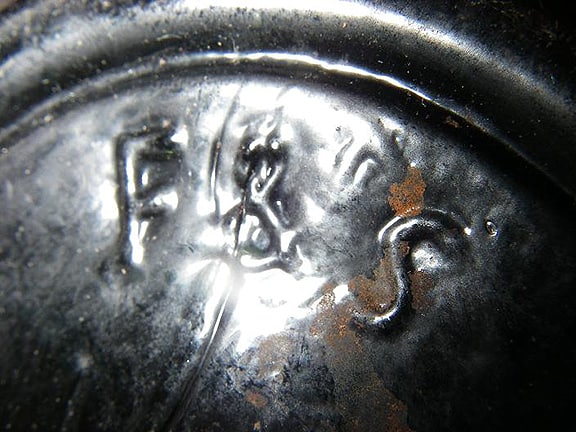
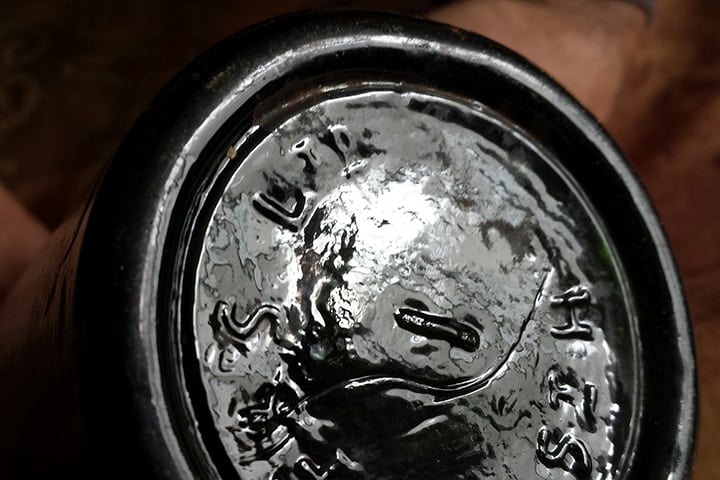
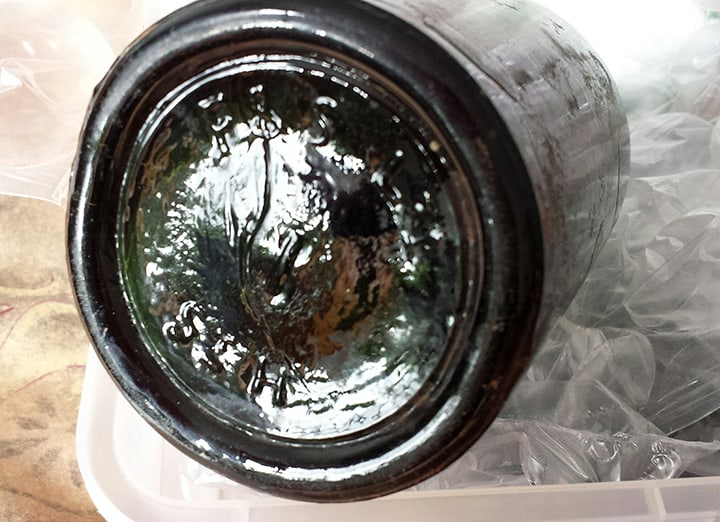
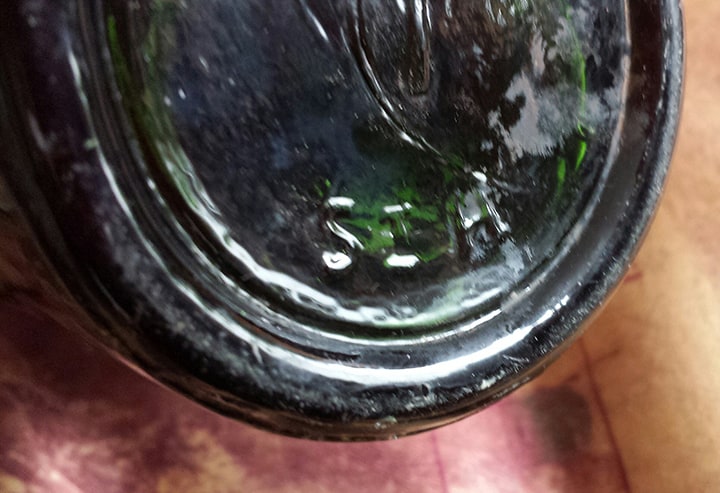 E-mail #2
E-mail #2
Hello Ferdinand,
How are you? Do you think that the origin of my bottle (wine? Beer?) from wreck of the Empress of Ireland can be Fuhrmann and Schmidt Brewing Company? What do you think about that? Here is the story of this American company (see file attached). There was an exposition about the Empress of Ireland in the Canadian Museum of History. It finished this week-end.
http://www.historymuseum.ca/empress
Have a great day,
Francine Saint-Laurent
Montréal (Québec)
Empress of Ireland
[Wikipedia] RMS Empress of Ireland was an ocean liner that sank in the Saint Lawrence River following a collision with the Norwegian collier SS Storstad in the early hours of 29 May 1914. Of the 1,477 people on board, 1,012 died. The number of deaths is the largest of any Canadian maritime accident in peacetime.
Empress of Ireland was built by Fairfield Shipbuilding and Engineering at Govan on the Clyde in Scotland and was launched in 1906. The liner, along with her sister ship Empress of Britain, was commissioned by Canadian Pacific Steamships (at that time part of the Canadian Pacific Railway (CPR) conglomerate) for the North Atlantic route between Quebec and Liverpool in England. (The transcontinental CPR and its fleet of ocean liners constituted CPR’s self-proclaimed “World’s Greatest Transportation System”.) Empress of Ireland had just begun her 96th sailing when she sank.
The wreck lies in 40 metres (130 ft) of water, making it accessible to divers. Many artifacts from the wreckage have been retrieved, some of which are on display in the Empress of Ireland Pavilion at the Site historique maritime de la Pointe-au-Père in Rimouski, Quebec. The Canadian government has passed legislation to protect the site.
Numerous books have been written about the sinking of Empress of Ireland and several films and documentaries have been made.
More: Empress of Ireland
Fuhrmann and Schmidt Brewing Company
Origin of F&S Beer dates to mid-19th century; company endured for decades
BY LARRY DEKLINSKI (Staff Writerlarry_d@newsitem.com)
Published: May 24, 2013
SHAMOKIN – Many businesses have come and gone since Shamokin was incorporated in 1864, though only a few are as memorable as Fuhrmann and Schmidt Brewing Company. Founded in 1896 by German immigrants Max Schmidt and P.H. Fuhrmann, the origin of F&S beer actually dates to 1854, when Thomas Richards and John B. Douty started Eagle Run Brewery, a small ale and porter producer situated at the base of two mountains across Route 61 from what is today the west end of Tharptown.
In December 1871, Martin Markle purchased the brewery from the Douty family and made extensive improvements. Around that time, Markle began manufacturing what would later become F&S beer.
Rise of F&S
Philip Henry Fuhrmann was born in Frankenthal, Germany, on June 16, 1863. He received his education there, later moving to Dubois, Pa., in 1883. The following year he became a salesman, then plant superintendent for Chas. D. Kaier Company, a popular brewery in Mahanoy City.
By 1885, Fuhrmann, who had accrued $25,000 in company stock, sued Kaier for not properly managing the brewery while he was on vacation in Germany. Founder Charles Kaier bought Fuhrmann’s stock and terminated his employment. In 1895, Fuhrmann moved to Shamokin and began negotiations to purchase Eagle Run Brewery from Markle. The sale was completed March 2.
Max Schmidt was born in Schlawe, Prussia (now Germany), on Dec. 30, 1858. He received his education in his native country and in 1877 came to America, first living in New York, then Shenandoah.
Schmidt and his brother, Frank, studied the dry goods business and established a general store, which they operated until 1896, when Max moved to Shamokin. That same year, he formed a partnership with Schmidt and incorporated the Fuhrmann and Schmidt Brewing Company.
Expansion
In addition to the Tharptown location, a three-story brick building containing main offices, cold storage and a bottling house was erected at Commerce and Washington streets in Shamokin sometime before 1908. The building, painted blue and still standing today near the municipal parking lot and post office, served as the main office location until Nov. 24, 1954, when it was sold to Blyer-Quinn Veterans of Foreign Wars Post 2318.
The Eagle Run plant employed at least 60 people in 1908. The plant contained a storage facility that allowed an output of 50,000 barrels, an ice plant of 25 tons daily capacity and a charcoal and gravel filtering system that killed germs from water taken from Eagle Run.
When the popularity of the beer increased, the brand name was changed from Eagle Run Beer to Fuhrmann and Schmidt Pilsner. The firm also established bottling plants in several communities, including Gettysburg and Carlisle.
Looking to expand production, F&S purchased the defunct Shamokin Brewing Company in the city’s Fifth Ward for $77,000 at a bankruptcy sale on April 26, 1912. The 11 lots included in the sale were home to a four-story brick brewing plant and office building that contained various pieces of equipment and machinery. Over the next several years, F&S also purchased several adjoining properties in order to facilitate future expansion.
Prohibition
A fire virtually destroyed Eagle Run Brewery on Jan. 19, 1916. It was rebuilt, although details of how soon couldn’t be obtained.
That fire wasn’t the only bad news for the company – Prohibition was coming in 1920.
Anticipating that drastic change, Fuhrmann and Schmidt incorporated the Shamokin Pure Food Products Company and transferred the deed from F&S to Pure Food on Oct. 1, 1917. The plant was retooled and used to process food products, such as salad dressings and vinegar.
On Aug. 10, 1926, the deed to the entire Shamokin plant was sold to Shamokin Beverage and Ice Company for $310,000, which after inflation would be more than $4 million today. Although details are unknown as to why, the firm sold back the property to F&S on Aug. 2, 1932, for $19,585.40, or some $332,000 today.
At a special meeting three weeks later, stockholders of F&S decided that all assets and liabilities of F&S would be transferred to Fuhrmann and Schmidt Liquidation Trust. The purpose of the trust was to pay the beverage company the agreed purchase price, pay off the obligations of the beverage company and F&S, pay current expenses of the trust and to take possession of and hold all assets of F&S. The amount of shares was also increased from 5,000 to 500,000.
Meanwhile, on the heels of the repeal of Prohibition in April 1933, the Shamokin Pure Food Products was dissolved and the vinegar plant sold on April 23, 1931, to Cellulose Products Inc. for $75,000. The plant and remaining buildings were eventually torn down after exchanging hands several times over the next several decades. Although the Eagle Run Brewery is long gone, the name “Brewery Curve” on Route 61 has remained into the 21st century.
Loss of founders
On Nov. 18, 1945, Max Schmidt died in his family residence at Washington and Cameron streets in Shamokin, following a long illness. He was 86. The illness dated to 1938 when he underwent an operation for gangrenous appendicitis. As his health declined, Schmidt found it necessary to resign as vice president and treasurer of F&S, but agreed to accept secretaryship, which he held until his death.
Schmidt was married to Mary Sneddon, of Mount Hope, who proceeded him in death in 1914. They had two daughters, Emilie (Richardson) and Agnes, and four sons, Frank W., J. Oliver, Harry and Eitel. Schmidt was laid to rest at Shamokin Cemetery. (He will be among the featured characters at Saturday’s reenactment scenes at the cemetery of notable former local residents.)
On Jan. 17, 1949, P.H. Fuhrmann died at his home on Trevorton Road. He was 85. Fuhrmann served as company president until 1947, then as chairman of the board until his death.
Fuhrmann was married to Caroline Hahn, of Philadelphia, who proceeded him in death in 1944. They had two daughters, Mary (Buehler) and Gretchen (Lieberman). Fuhrmann was laid to rest at St. Edward Cemetery in Springfield.
Over a period of 40 years, Fuhrmann and Schmidt personally directed all activities of the enterprise, but with advancing age they initiated a new business structure that admitted younger men into management.
Frank Schmidt succeeded his father’s partner as F&S president and served in that position until his retirement in the 1960s. He was succeeded by Alfred F. Buehler, Mary’s husband.
‘Sealed-Ageing’
The brewery in Shamokin underwent an eight-year expansion program in 1946 to meet demands. The first project enlarged storage by 5,941 barrels with the installation of a new cellar that included 13 glass-lined tanks. The same year, installation of a new electric engine room and machine shop were completed.
Over the next several years, additions and expansions took place in other areas of the brewery, including hop storage, the laboratory and tap room. The expansion hit its pinnacle in 1954 with the completion of a new bottling shop, garage and offices at a cost of $300,000 – $2.56 million today. To emphasize the effect the upgrades would have on the consumer, a new advertising program was waged. The slogan, “Sealed-Ageing Process,” became customary on all bottles and cans.
The decline
In 1966, Henry F. Ortlieb Brewing Company, a Philadelphia firm founded in 1859 as Louis Schweizer, purchased F&S and the Charles D. Kaier Company – the same company where Fuhrmann was plant superintendent in 1885. Production ceased at the Kaier plant in January 1968. The brand was later produced in Shamokin.
F&S was still marketed under the Fuhrmann and Schmidt name; however, the families no longer owned the business. Buehler remained as president and J. Oliver Schmidt as vice president of sales.
Production in 1966 was 160,000 barrels, a small cry from the millions of barrels some national companies were starting to produce. In a 1996 interview, long-time employee and bottling shop superintendant Bob Appel said the brewery began have problems keeping up with larger, more-modern breweries that had the luxury of high-speed machinery.
A lack of technology, the larger advertising campaigns of the bigger breweries and a declining population in the Shamokin area also contributed. Appel and Edward Maerkl, the last F&S brewmaster, had toured a brewery with advanced technology and commented that the plant broke more bottles than F&S filled.
By August 1973, Ortleib had sold the brewery to James D. Verrastro, a Williamsport native who had earned his money in the trucking business. Listed as executive officers that year were Verrastro, president; Joseph Lecce, vice president; Henry Perciballi, secretary; and Maerkl, master brewer.
The brewery experienced a huge blow in November 1974 when Verrastro declared voluntary bankruptcy and closed the doors. The following year, Appel, Adolph John, chief engineer, and other employees worked for several months toward reopening the plant. The lines were within a week of opening when disaster struck.
A permanent end
In the afternoon of Nov. 3, 1975, thousands of spectators watched as firefighters attempted to extinguish a massive fire at the brewery.
Several neighboring residents noticed smoke coming from the back of the building at 4:45 p.m., just 15 minutes after Appel and John had left the property following repairs to machinery and pipes. As residents were turning in the fire, a city resident walking his dog saw two boys running from the rear of the property. The man’s observations would later become key in the investigation.
Suppression efforts were hampered by many obstacles, including locked doors, a wall in the rear of the building that collapsed around 8 p.m. and the worry of explosion when it was believed there was ammonia or other explosive materials in the building.
Three fireman were transported by ambulance to Shamokin State General Hospital, with one admitted. Treated and admitted for smoke inhalation that day was Earl Sheriff, 22. Treated and released were Jack Chropowicki, 29, and Jesse Stoop, 19.
Mort Baskin, a member of the hook and ladder team, barely missed serious – if not fatal – injury when a cable on a 85-foot ladder broke, causing the ladder to close rapidly. Baskin had descended the ladder just moments before.
More than half of the brewery was gutted by the flames at an estimated cost of $2 million, and it would mark a permanent end to the brewery.
Arson
A joint-investigation by several agencies determined the boys seen running from the building had ignited the fire. On Nov. 17, the two 11-year-olds were arrested and charged with arson in juvenile court.
Patrolman Bobby Olcese, who led the city’s end of the investigation, said in talking to children in the area, he learned that one of the youths had talked about setting the fire. The boy admitted they entered the building by squeezing through a door. Once inside, they said they found a can of combustible material, which they poured in at least six different places before igniting it with matches.
Now low-income houses
By 1979, the Shamokin Redevelopment Authority and Shamokin Housing Authority were searching for a location to construct low-income housing. The grounds of the deteriorating brewery were chosen, and by the early 1980 the process of acquiring the property had begun. On Jan. 7, 1981, Verrastro executed the deed to the City of Shamokin. By May, demolition of the brewery was underway.
A $1.085 million federal Housing and Urban Development (HUD) grant was used to construct 16 two-story townhouses in three individual buildings along Harrison Street. A portion of the grant money was also used to construct six additional units at the former Stevens Elementary School on Spruce Street.
Upon completion of the townhouses, the title was transferred from HUD to the Shamokin Housing Authority under terms of a 40-year lease.

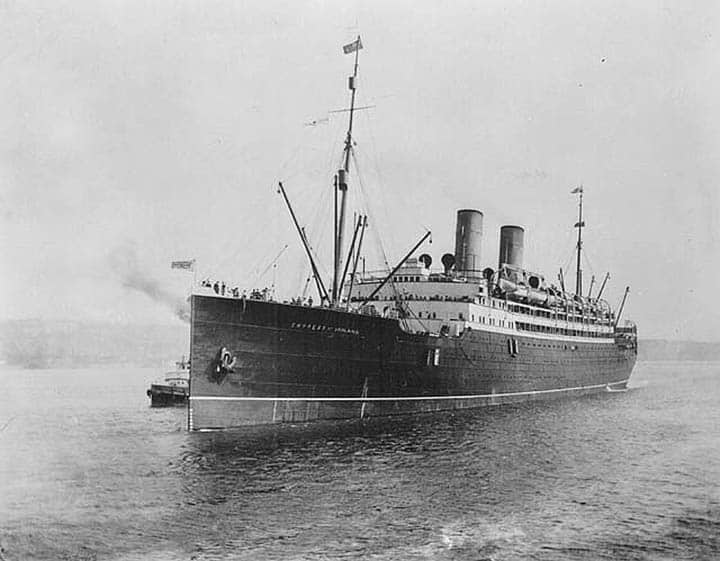
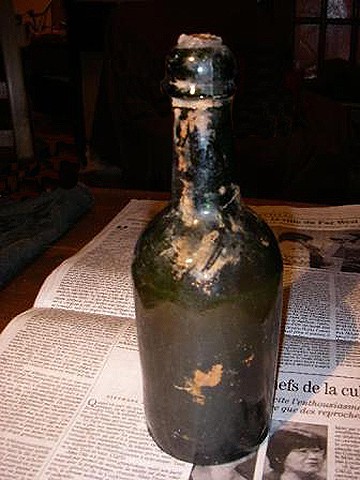
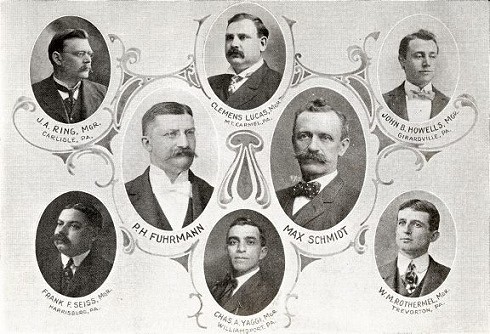






From Glen C. Phillips: Two things: 1) there are many claims about bottles coming from the Empress of Ireland, so be aware, since not all are genuine artifacts from the vessel, 2) this fellow is legit, though it’s a British bottle and not one from Fuhrmann & Schmidt of Shamoklin, Pennsylvania (the “F & S” being a coincidence). As to the latter point, the Canadian Pacific Railway supplied its passenger liners, such as the Empress of Ireland, at its regular ports of call (primarily Quebec City and Liverpool). Given that the bottle above is typical of British brewery bottles from the early twentieth century, I’d say that the bottle’s British and not from a regional American brewery hundreds and hundreds of miles away from Quebec City. Not trying to sound mean here, just trying to sharpen the historical focus. Now, as to the “F & S / St. A. [St. H.?]” basal marking, I’m still working on that, but perhaps an expert in British breweries and/or glass companies could shed some light.